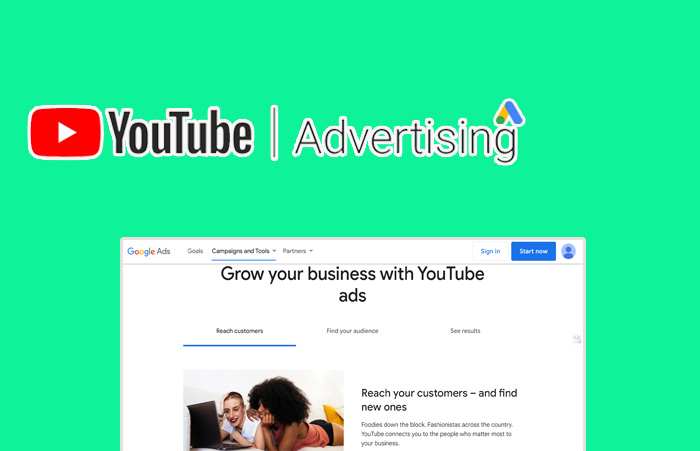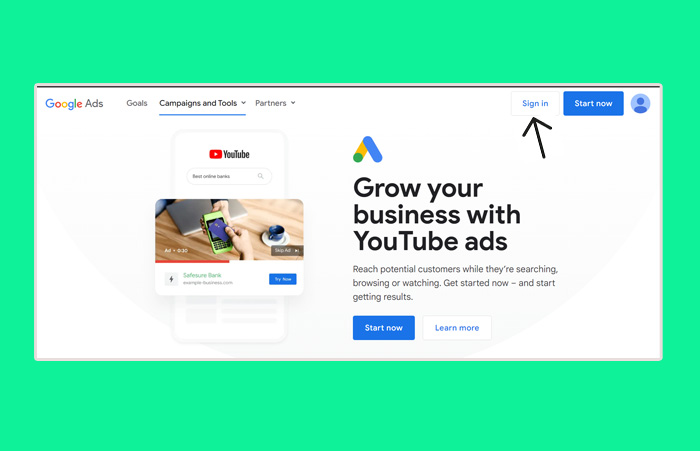Among the diverse array of social media platforms, YouTube stands out as a dynamic choice for businesses and brands. YouTube ads have become an integral part of digital marketing strategies due to their immense significance in reaching and engaging with target audiences.

The significance of YouTube ads in digital marketing strategies cannot be overstated. As of 2024, YouTube has achieved remarkable growth and stands as one of the largest social media networks globally. It serves as the platform of choice for marketers, with 55% incorporating it into their marketing strategies.
This extensive use is further backed up by an increase in advertising revenues, with professionals forecasting that YouTube’s revenue will grow by 10.3% in 2024, reaching $33.5 billion by the end of the year. Supported by the fact that the average person is exposed to a staggering 5000 ads each day, highlighting the enormous visibility and exposure that this platform provides.
What Exactly Are YouTube Ads and How Do They Work?
YouTube Ads, also known as YouTube Advertising, is a way of promoting your video content on YouTube. They refer to the promotional content displayed before, during, or after videos on the platform. These ads allow advertisers to communicate their brand messages using video content in diverse formats, catering to the preferences and behaviors of the target audience
The impact of YouTube ads is substantial, ranging from brand awareness to lead generation and conversions. Their versatility makes them a powerful tool for businesses seeking to engage consumers and drive results. In essence, YouTube ads are versatile marketing tools that encompass various formats and help in attracting, and converting potential customers, ultimately contributing to the success of advertising campaigns. Note that creating a Google Ads account is free and via the official website.
Types of YouTube Ads
YouTube offers various ad formats to cater to different advertising objectives and audience preferences. Each ad format possesses unique characteristics and serves specific advertising goals. The major types of YouTube ads include:
- Skippable In-Stream Ads: These ads are video ads that allow viewers to skip the advertisement after 5 seconds. Advertisers are only charged when the viewer watches for at least 30 seconds or until the end of the ad, or if they engage with the ad. You can make use of Skippable in Stream ads to promote your product sales, drive more leads and traffic, create brand awareness and reach, and much more.
- Non-Skippable In-Stream Ads: As the name suggests, compel viewers to watch the full duration of the ad before they can proceed to their desired video content. These ads can be up to 15-20 seconds long and are valuable for capturing viewers’ undivided attention within a shorter time frame.
- Bumper Ads: These are short, non-skippable ads of up to six seconds in length. They are highly effective for conveying brief messages or emphasizing brand awareness, making them ideal for reaching a wide audience with quick, impactful content.
- Outstream Ads: These mobile-specific video ads can appear on partner websites and apps, rather than being restricted to the YouTube platform. These ads cater to the increasing mobile consumption of video content and allow marketers to extend their video ads’ reach beyond the YouTube ecosystem.
- In-Feed Video Ads: These ads blend organically with the platform’s content, enabling advertisers to engage with users in a non-disruptive manner. Note that you will only be charged when viewers choose to watch your ads by tapping on the thumbnail. This method is best for product and brand consideration.
- Masthead Ads: These are premium ad placements that appear prominently at the top of the YouTube homepage across all devices.Which enables advertisers to make a significant impact by reaching a vast audience and driving brand awareness.
How Much Does YouTube Ads Cost?
On the contrary, YouTube ads aren’t as expensive as you might think but is very affordable. YouTube Ads cost is based on views. Depending on your target keywords, each view can be in the range of $0.10 to $0.30. And, the cost can vary widely depending on the targeted audience and advertising goals.
YouTube Ads cost is determined by several factors such as competition, relevance of the content, viewer demographics, and ad placement. To calculate your estimated AdWords budget, you can use Google’s AdWords calculator tool. The more you spend, the more your ads will be shown, which increases your chances of reaching your target audience.
Factors Influencing These Cost
YouTube advertising costs may vary based on several key factors. Here are the significant factors that can influence the cost of YouTube advertising:
- Ad Quality: The quality of the advertisement itself can impact the pricing. Generally, ads that are more engaging, visually appealing, and well-crafted could potentially cost more due to their higher effectiveness and potential for better results.
- Engagement Metrics: YouTube ads often involve cost-per-view (CPV) or cost-per-click (CPC) pricing models. The interaction levels, such as the number of views or clicks an ad receives, can influence its overall cost. Higher engagement rates might lead to higher costs.
- Format and Length: The format and duration of the ad are pivotal factors affecting its cost. For instance, shorter ads like 15-second slots may be more cost-effective compared to longer formats. This is because shorter videos can sometimes capture viewers’ attention more effectively.
- Seasonality and Demand: The cost of YouTube advertising can also be influenced by seasonal variations and overall demand. During peak times or popular events, the competition for ad space might increase, potentially driving up the costs for advertisers.
- Geographical Targeting: Geotargeting, which involves delivering ads to specific locations, can impact the cost of advertising on YouTube. The pricing may differ based on the regions or countries targeted, with certain locations commanding higher rates.
- Ad Placement: The placement of the ad within YouTube can also influence its cost. For instance, ads shown on high-traffic or popular channels or during trending videos may come at a premium price compared to less prominent positions.
How to create a YouTube ads Campaign?
Whether you’re just starting or looking to improve your existing advertising strategies, a step-by-step process can streamline the creation of compelling YouTube ads. Below is a comprehensive guide to help you to create successful YouTube ads.
Step-by-Step Guide
- Upload Your Video Ad to YouTube: The first crucial step in creating a YouTube ad is uploading your video to YouTube. Ensure that your video content aligns with your advertising goals and resonates with your target audience. When uploading, optimize your video title, description, and tags to enhance its searchability.
- Create a New Video Ad Campaign in Google Ads: The next step is to create your YouTube advertising campaign in Google Ads after uploading the video at “ads.google.com”. This involves setting up your account if you haven’t already, linking your YouTube Channel, and accessing the advertising platform to initiate the campaign creation process.

3. Create your Campaign Section: Under this section, you have to do the following;
- Choose the Ad Goal: When setting up your ad campaign, you will need to select the campaign goal, such as Sales, Leads, or Website Traffic. Each goal has unique targeting strategies and ad formats, so it’s essential to align your choice with your advertising objectives.
- Add your Search Theme: For defining who should see your ads. These are the words or phrases people use when searching for your products or services.
- Create Ads: You have to create an ad to sell your product or service here. You get to set and add the images, tests, and other assets for your ads. Preview is also available here.
- Choose the Bidding Strategy: Select the campaign subtype and bidding strategy that best suits your advertising goals and budget. Depending on your target audience and the type of ad you’re creating, these settings will determine the reach and impact of your campaign.
- Enter a Campaign Budget: Give your campaign a descriptive name and set a budget that aligns with your overall marketing objectives. Balancing your budget allocation across different ad formats and audience segments is essential to maximize the campaign’s effectiveness.
- Monitor your YouTube ads: Now, you can launch your Ads campaign. Always, log into your Google Ads account daily to ensure you’re not spending too much and that your ads are showing to the target audience. Some key metrics you’ll want to pay attention to:
- Total impressions
- Audience, etc.
The Advantages and Disadvantages of Using YouTube Ads in Digital Marketing
YouTube has become an essential part of digital marketing strategies due to its unparalleled reach and engagement potential. However, as with any marketing platform, there are both advantages and disadvantages to consider when incorporating YouTube ads into a digital marketing strategy.
Advantages
- Vast and Unique Reach: YouTube’s wide user base provides unrivaled reach. With billions of users visiting the platform, it offers an unparalleled opportunity to showcase products or services to a diverse audience.
- Highly Effective Targeting: YouTube enables precise targeting based on demographics, interests, and locations, allowing marketers to tailor their ads to specific audiences.
- Content Engagement: Video content has the potential to engage audiences emotionally and visually, making it a powerful tool for evoking a response from viewers.
Disadvantages
- Popularity and Lack of Control: Owing to its popularity, YouTube may lack the level of control advertisers desire, making it more difficult to stand out among competitors.
- Time-Consuming Process: Implementing and monitoring YouTube ads can be a time-consuming process that requires consistent effort to ensure effectiveness.
- Skip-Ad Option: YouTube allows users to skip certain ads, which poses a disadvantage for businesses aiming to deliver a comprehensive message.
Conclusion
It’s clear that YouTube ads when strategically leveraged, can provide value to businesses aiming to boost their online presence and engage with their target audience. So, are YouTube ads worth it? The answer ultimately rests on your specific business objectives, audience demographic, and advertising strategy.

